Mark your calendars – and click through the gallery above – for seven fantastic Sonoma beer events happening in April.
7 Fantastic Sonoma Beer Events in April


Mark your calendars – and click through the gallery above – for seven fantastic Sonoma beer events happening in April.

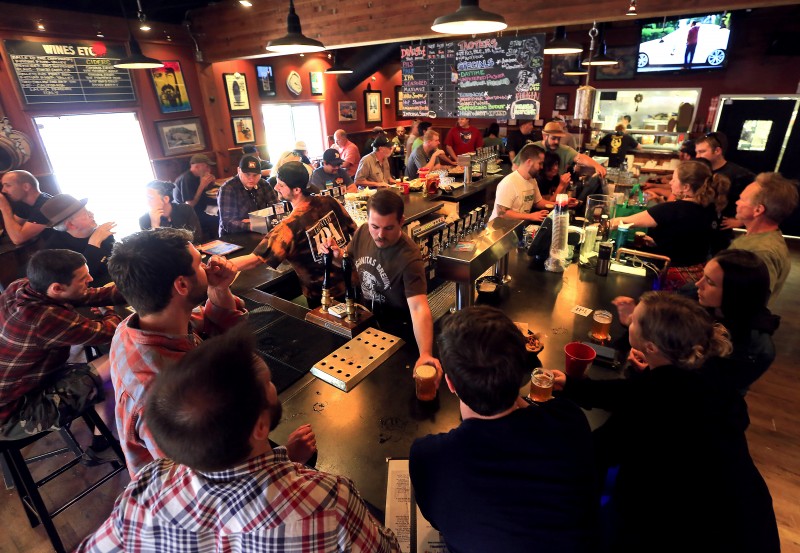
National Beer Day, observed annually on April 7th, commemorates the date the “Cullen-Harrison Act” went into effect in 1933. The law, signed by President Roosevelt, made buying, selling, and drinking beer and wine legal in the United States for the first time since prohibition in 1920.
While you may not be able to take a day off work to celebrate this important day, there’s still plenty of ways to honor your favorite fermented drink in Sonoma County – like sipping on these local brews.
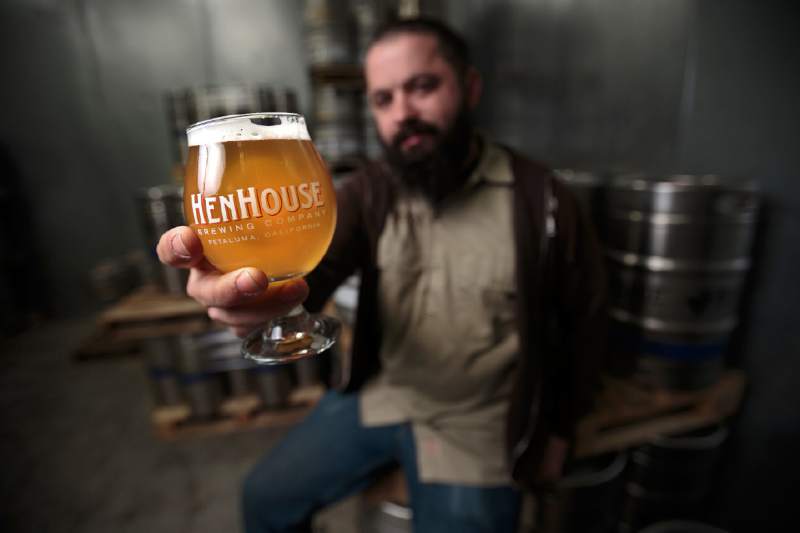
Russian River Brewery Porter (6.10% AVB)
This Russian River Brewery Porter is light with a medium brown color, flavors of malt and dark roast. A rich, medium body on the palate, integrated with massive carbonation, this bold drink pairs well with grilled meats.
Lagunitas Brewery Daytime IPA (4.65% AVB)
Lagunitas American IPA, is a session beer and a great daytime drink. It is light in color, with a big foamy head, and smooth on the palate with notes of pine and citrus. Don’t feel guilty about having two or three before dinner!
HenHouse Brewing Chemtrails (7.7% AVB)
This HenHouse IPA is available in cans. Like other HenHouse beers, it is made with loads of hops – expect notes of a true West Coast IPA; tart citrus and pine, backed with a heavy malt character. Sip on this hoppy brew while enjoying some crispy fried chicken with a spicy citrus glaze.
Moonlight Brewery Death and Taxes (5% AVB)
Moonlight Brewery‘s Death and Taxes is a solid, chestnut-brown lager. It has notes of bitter roasted malt, coupled with cocoa, coffee, earthiness and brown sugar. It’s light on the palate with flavors of hazelnut, peanuts, and a slight touch of hops. Pair this beer with food – or enjoy it on it’s own.
Cloverdale Ale Company Hop Geyser Double IPA (8% AVB)
This Cloverdale Ale Company (Ruth Mcgowan’s Brewpub) DIPA is smooth with heavy hop characters. It’s bursting with flavors from Simcoe and Cascade hops with notes of tropical fruit and citrus, and a slight resinous mouthfeel, finishing with citrus rind and a soft bitterness.

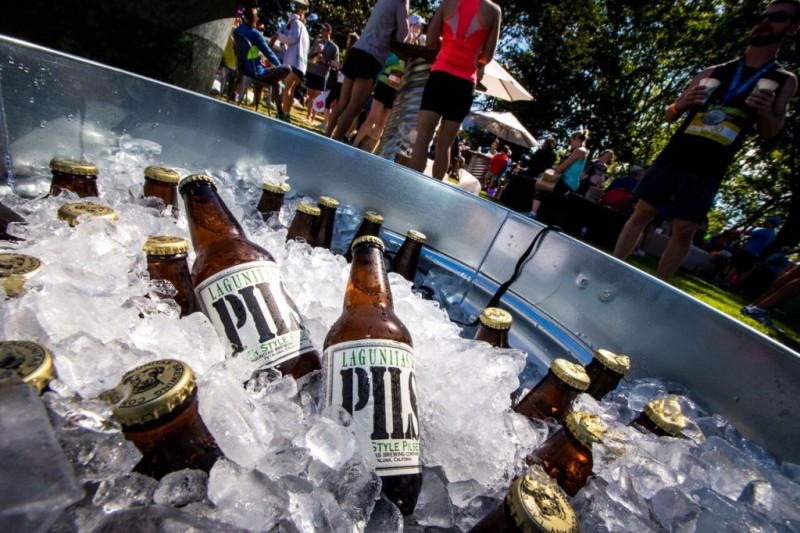
Warm weather is here. In Sonoma County, that means picnics in the park, tubing on the Russian River, and barbecuing in the backyard. Nothing pairs better with those three activities than a tasty session beer, which is low in alcohol and easy to drink.
Here are five local session beers to stock up that extra fridge in the garage for sunny days.
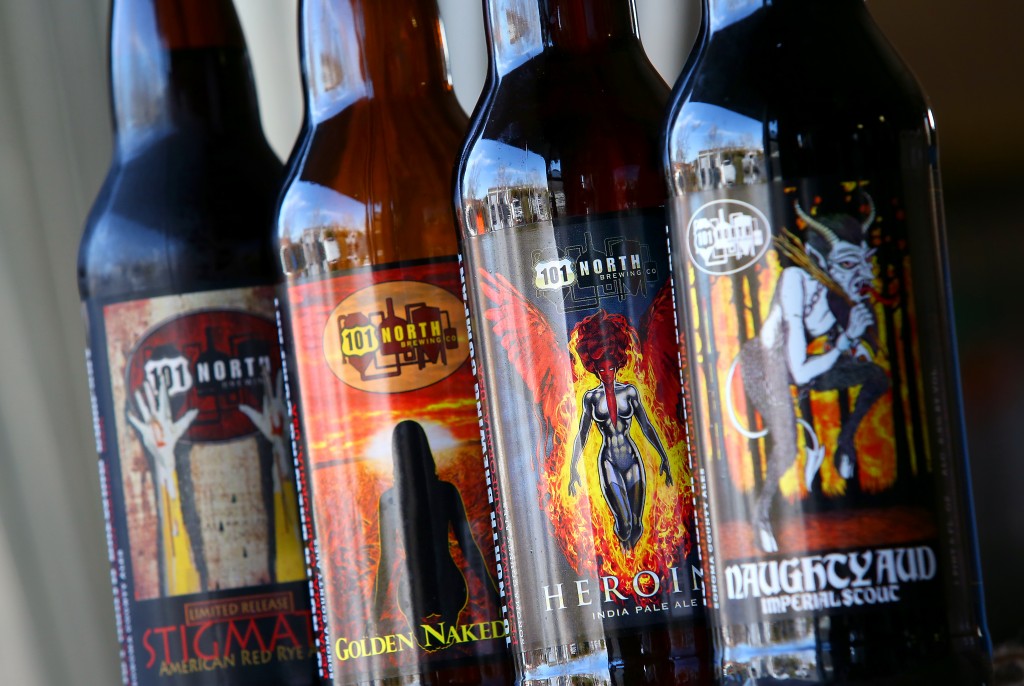
101 North Brewing Co. Golden Naked Ale (5.3% ABV)
An unfiltered golden ale, 101 North Brewing Co.’s Golden Naked Ale is a straightforward beer that gets its name from the use of golden naked oats in the recipe. A nice nose of caramel and citrus, a tasty biscuit-like flavor, and an easy finish. Pair this beer (clothes optional) with aromatic, flavor-packed Indian take-out.
Bear Republic Brewing Co. Pace Car Racer (4% ABV)
A session IPA, Pace Car Racer is one of the newer beers introduced into the prolific Bear Republic’s lineup. This straw-colored brew has the greatest hits of a good IPA, such as a bit of grass, pine and citrus. It wraps up with a touch of sweetness and malt. This nicely carbonated beer should be served in a cooler next to the grill.
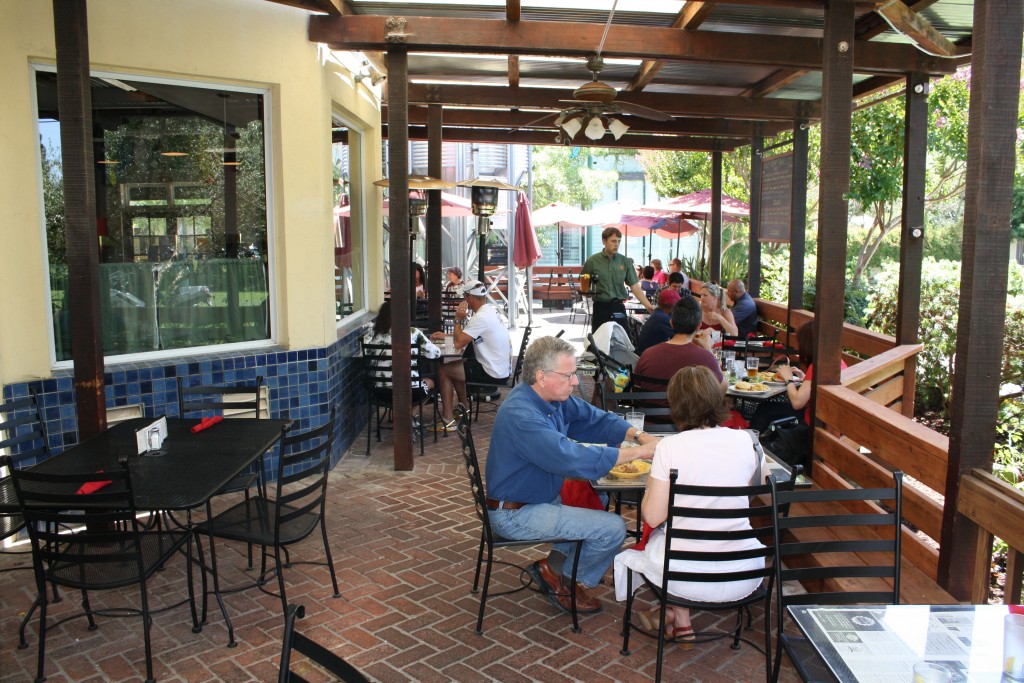
Lagunitas Brewing Company PILS (6% ABV)
A staple of the Lagunitas line-up, PILS is a Czech-style Pilsner that has been declared “easy to slam” by the Petaluma-based brewery. The beer has a a bit of earthy and citrusy scents and a nice, sweet malty flavor. Finishes up with a hoppy bite and you’ve got a primo poolside brew.
Russian River Brewing Company STS Pils (5.35% ABV)
Made in the tradition of a Czech pilsner, Russian River’s STS (the airport code for our own Charles M. Schulz Sonoma County Airport) has a scent and taste of lemon and bread with a nice, crisp finish. It’s unfiltered, so don’t be surprised if there is a bit of a haze. Grill up some sausage to pair and enjoy.
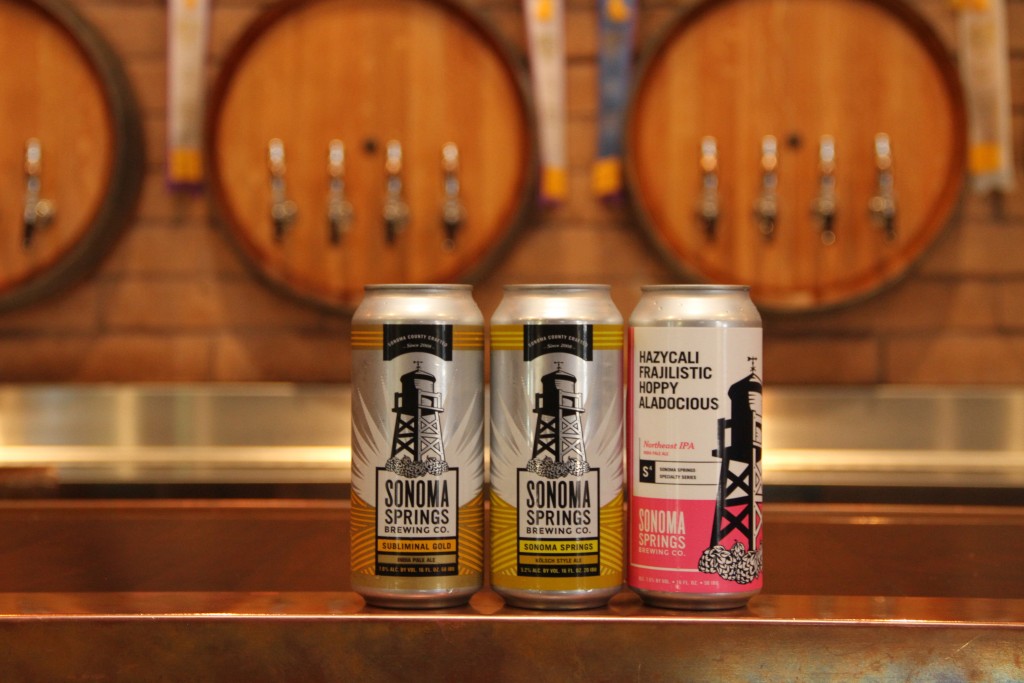
Sonoma Springs Brewing Co. Kölsch (5.2% ABV)
The City of Sonoma’s only brewery, Sonoma Springs Brewing Co. released their first canned beers in March, including their Kölsch, one of their core beers. Using malted barley sourced directly from Köln, Germany, this beer is light, dry and has a touch of grassiness on the end. Fans of European pilsners will approve.

Eating healthy is such a noble idea. We’ve all made those promises, bought the cookbooks, made special trips to the bulk bins for things like brewer’s yeast and amaranth flour. After all the expense and time, you’ve got a pantry full of mystery ingredients you’ll likely never use. You’re not alone.

We’ve found the perfect solution: Weekly “shares” from Three Leaves Community Supported Kitchen that includes “ready to heat and eat” dishes like coconut milk lentil soup with bone broth, pasture-raised meatloaf with root vegetable puree and greens, Thai salad with maitake mushrooms, apple chutney, or cinnamon cashew milk rice pudding.

Former Ceres chef Rob Hogencamp has taken over Sonoma County’s first CSK (Community Supported Kitchen), introducing many of his own recipes for weekly “shares” picked up at the store. Each share includes:
-1 32 oz. field-inspired soup
-1 32 oz fresh salad
-1 32 oz side dish
-1 easy-to-reheat prepared dinner entrée
-1 8 oz ferment, sauce or spread
-a healthy gluten-free dessert
He’s also got several freezers and refrigerators, however, for a la carte offerings ranging from bone broth and burgers to vegan desserts, probiotic drinks, nut butters and dressings. Everything is sustainably sourced, packaged in reusable or compostable containers.
We’ve tried programs like this in the past, and been a bit underwhelmed or simply didn’t like the dishes, but Hogencamp’s experience feeding seriously ill folks at Ceres with delicious, whole foods that actually taste good translates perfectly to those of us who just want to eat better. Plus, when you can get a teen to eat lentil soup for three days straight without complaint? Win.
As a member, I look at our shares as “veggie insurance”–a premade promise that we’re eating something with dense nutrition several nights a week. That way I don’t feel quite so guilty when we have to hit the drive-thru on busier nights. And no, I don’t get a discount or a freebie for saying that.
Some weeks have been more to my personal taste than others, and I certainly haven’t liked everything. But overall, Rob’s mason jars are the first thing I go for in the fridge. And, again, when a teen says, “Can we have Three Leaves tonight?” I call it a huge win.
Each “share” is $80, and is roughly 2-3 meals, depending. (For comparison, we tried Blue Apron, which is about $60 for three meals and requires prep and cooking). We use the salads as supplements to our usual dinners, soups for 2-4 lunches, and the entree for, well, an entree with some leftovers. Condiments and desserts are usually hidden for me. Prices are $75 if you pay a month in advance.
For more details on ordering and pricing, along with Three Leaves’ hours, go to threeleavesfoods.com.

Looking for something fun to do in April? Browse the gallery above for our favorite picks.

Miyoko’s Creamery has cracked the code on vegan butter.*
The Bay Area vegan cheesemaker*, Miyoko’s Kitchen, recently released VeganButter, a cultured cashew and coconut oil “butter” that can be spread, melted, or used in baking just like butter. The kicker is that unlike heavily-processed margarines (which aren’t necessarily vegan and aren’t allowed in my household), Veganbutter is 100 percent animal product-free, organic and actually tastes incredible.
As a butter connoisseur I don’t take that statement lightly. But in a late night, highly unscientific kitchen counter taste test against cultured European butter, I actually preferred the taste of Veganbutter slathered on sourdough bread. To the tune of half the loaf. I blame the cultures.
Like yogurt, live bacteria are added to “cultured” butters before churning, creating very noticeable tart, sweet flavor. Most American butters lack culture, which doesn’t mean they’re terrible at clever party banter, but are simply churned cream and salt without the cultures.
So how do you make this oxymoron of a food? We asked CEO and Founder Miyoko Schinner for the details.
“In the old days, dairy butter was cultured, too (still is in parts of Europe). We wanted to capture that flavor,” she said. “The flavor and tang come from fermentation of fresh cashew milk, which we make in-house, then add dairy cultures (lactic acid bacteria) to the milk, and ferment until it reaches the right pH. We don’t add any flavorings — it’s all naturally derived through fermentation!” said Schinner.
If you’re shaking your head in disbelief, we’ll admit that there are a few differences that true butter lovers will notice.
The texture of VeganButter right out of the fridge is a bit crumbly, compared to the smoothness of real butter. It also comes in a plastic wrapping, instead of foil or waxed paper, so you have to dump the whole thing out on a plate, then repackage the rest for later use, which can be messy. We also didn’t love the overall color, which is more white than yellow, making it look a bit more like tofu than butter. Finally, when melted, the flavor changes slightly, giving it a slightly “buttered popcorn” flavor. Minor stuff, and definitely not deal-breakers for us.
So if you’re thinking about taking the plunge into veganism and can’t bear the thought of a butter-free existence (or lactose intolerant), we think Miyoko’s Creamery VeganButter might just make life a little more delicious.
Miyoko’s Cultured VeganButter is available at Trader Joe’s, $7.99 or online at miyokoskitchen.com.
*, **: Yes, we know that without dairy it’s technically not “butter” but saying vegan butter-style spread is really clunky. Miyoko’s Kitchen also makes “cheese” that isn’t actually cheese, but cultured nut product.

New England-style IPAs, a.k.a “Juicy IPAs,” are the latest craze on the Sonoma County beer scene.
Following in the footsteps of Massachusetts-based breweries like Trillium and Treehouse, Sonoma County brewers are busy experimenting with these juicy, hazy brews in single, double and triple IPAs – even Pale Ale. Some local brewers are using the Vermont yeast strain “Conan” that made beers like the “Heady Topper” popular, while others are using their favorite yeasts and different kinds of hops to yield their own take on the juicy brew.
Here are 6 Sonoma breweries to check out if you’d like to sip on a juicy beer.
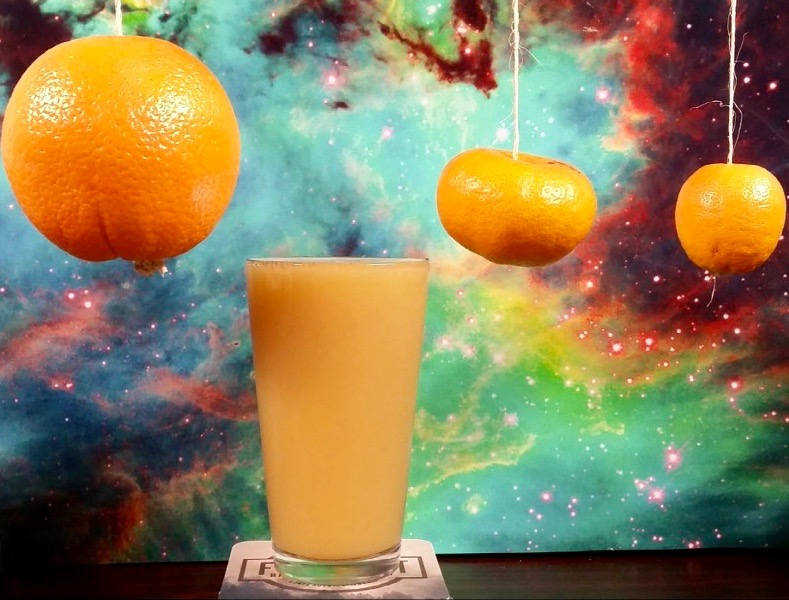
Cooperage Brewery in Santa Rosa has tapped a beer called “Lieutenant Dang.” This is Pale Ale (not an IPA-style beer, but just as juicy) made with the Vermont yeast strain, Conan, that many other brewers are using to make juicy IPAs. Cooperage owner and master brewer Tyler Smith is planning on brewing some additional hoppy beers in the coming weeks which he says will also be similar to the juicy IPAs. In true Cooperage fashion, expect clever and fun names for these new brews – “Curt Don’t Hurt” and “He’s So Curty” are some of our favorite Cooperage beer names. Cooperage Brewing, cooperagebrewing.com, 981 Airway Ct g, Santa Rosa, CA 95403, (707) 293-9787, @CoopergaeBrewing
Fogbelt Brewing in Santa Rosa has their 6.8% AVB “Stardusk IPA” on draft right now. This hazy and juicy IPA, named after the Humboldt County native Stardusk tree, is packed with citrus aroma and flavor. Fogbelt used a saison yeast for this brew, which adds a touch of bubblegum and a slight sweetness to the profile. Taste this beer on draft at the Fogbelt taproom on Cleveland Avenue in Santa Rosa. Fogbelt Brewing, fogbeltbrewing.com, 305 Cleveland Ave, Santa Rosa, CA 95401, (707) 978-3400, @FogbeltBrewing
HenHouse Brewing in Santa Rosa just released their first juicy IPA called “Frozen Envelope”. This beer is brewed with half wheat and half pilsner malt and is hopped with Idaho 7 and Ahtanum hops. HenHouse used the Conan yeast strain, which adds peach and stone fruit flavors to this beer and accentuates the tropical fruit and citrus character of the hops. Taste this beer, on tap, in the taproom off Corby Avenue in Santa Rosa. HenHouse Brewing, henhousebrewing.com, 322 Bellevue Ave, Santa Rosa, CA, (707) 978-4577, @HenHouseBrewing
Russian River Brewing (RRBC) in Santa Rosa released their first juicy IPA this month, called “Tempo Change.” Known as the father of IPAs, owner and brewmaster Vinnie Cilurzo decided to try his hand at a North East version. Much like the famous RRBC West Coast-style IPAs “Blind Pig,” “Pliny the Elder” double IPA and “Pliny the Younger” triple IPA, Tempo Change is a huge hit among beer lovers and is juicy, smooth and packed with flavor. Russian River Brewing Co., russianriverbrewing.com, 725 4th St, Santa Rosa, CA 95404, (707) 545-2337, @RussianRiverOfficial
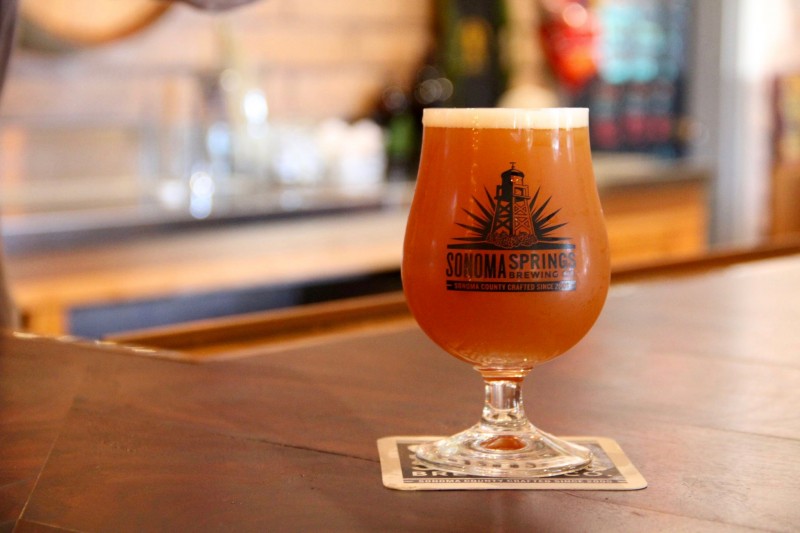
Sonoma Springs produced their first juicy IPA , “HazyCaliFrajilisticHoppyaladocious (HazyCali),” earlier this year, and it ran out in about a day when it was released on draft at the Sonoma taproom. The HazyCali is brewed with Crystal, Amarillo, Mosaic, and Simcoe hops. With a heavy oat and wheat base, this beer tastes like ruby red grapefruit juice and has a super smooth mouth feel at 7.5% ABV. It is now available at the Sonoma taproom, both in cans and on draft. You can also find HazyCali in stores around the Bay Area and Northern California (to locate this beer near you, click here). Soon after the release of the HazyCali, Sonoma Springs added two more juicy IPAs to their lineup: “Juicy In the Sky” double IPA, 8.3% AVB (which will be available in cans in April) and “Duck Duck Juice” IPA, 6.5% AVB. The Sonoma brewery is now working on two more North East-style brews that will be available at the taproom in the next month. Sonoma Springs Brewing, Sonomaspringsbrewing.com, 19499 Riverside Dr., Suite 101., Sonoma, Ca 95476, (707) 938-7422, @SonomaSpringsBrewing
Bear Republic Brewing in Healdsburg released their first juicy brew during SF Beer Week. The “Kompromat,” a double IPA made with the Conan Vermont yeast strain, was so well received that they have since made it available at the brewpub in Healdsburg. Kompromat is extremely smooth and comes in right at 8% AVB. Bear Republic has previously made more bitter IPAs, so this brew is out of their normal range but is as delicious as the rest of their beers. Get it on draft now at the brewpub, before it runs out. Bear Republic Brewing Company, bearrepublic.com, 345 Healdsburg Ave, Healdsburg, CA 95448, (707) 433-2337, @BearRepublic

BY KATHLEEN HILL
It’s a feast of food and wine films at this year’s Sonoma International Film Festival (March 28-April 2, 2017), and you’ve got a front row seat.
As the Valley prepares for its Hollywood moment (or is that Sonomawood?), it’s been hard not to get a little hungry while pouring over the food and wine documentaries to see what’s on the cinematic menu. Here’s the mouth-watering lineup…
National and international food experts share a century of food stories about this larger-than-life cook who mentored and inspired many of greatest America’s chefs. Culinary dignitaries including Alice Waters, Cookbook Author and Julia’s Child’s editor Judith Jones, NYC Chef Larry Forgioni, and Restaurant Consultant Clark Wolf will be on hand to share their own stories.
During both screenings, Beard’s favorite onion sandwiches and Madrone wines will be served. The film is preceded by “Caviar Dreams” and tastes of California caviar.
I’m honored to be presenting at both screenings, with co-producers Kathleen Squires and Elizabeth Federici in attendance. Friday, March 31 at 5:30 p.m. at the Sonoma Valley Museum of Art and at Vintage House at 3 p.m. on Saturday, April 1. (Don’t miss hearing them talk about the film this Friday from 10 to 11 a.m. on KSVY -91.3 FM or ksvy.org.)
America’s First Foodie: The Incredible Life of James Beard from Beth Federici-Documentary on Vimeo.

Three brothers’ take an adventurous trip across Turkey, learning about one of the most interesting ancient cuisines of the world. Learn about regional kebab dishes, aubergine or eggplant specialties, pilaf with anchovies, grape leaves and baklava. Thursday, 11:45 a.m. at Celebrity Cruises Mobile Cinema and Friday at 9:15 a.m. at the House of Docs (Veterans Building). Preceded by “Food City: Feast of Five Boroughs,” in which chefs try to prepare a four-course meal with foods grown or wild-caught in Brooklyn, the Bronx, Manhattan, Queens and Staten Island. Watch trailer.
A trio of Brazilian chefs travel back to their culinary roots in France, Italy and Japan. Lots of flavors and gastronomic stories on the road full of food and travel. Friday at 2:30 p.m. at the Sonoma Community Center and Sunday at 7:30 p.m. at Sonoma Valley Museum of Art.
The Chocolate Case from BlazHoffski / Dahl TV on Vimeo.
The widespread use of child labor, and in some cases child slavery, in the Western African cocoa trade has shocked human rights organizations and chocolate eaters. To shine a light on this atrocity, Dutch journalists seek to create their own slave-free chocolate bar. Friday at 5:30 p.m. and Sunday at 2:30 p.m. at the Veterans Building.
How women affect the world through gastronomy, introducing chefs, sommeliers, and activists who change up the food world game. Bites from the Fig restaurants and the Fig Rig truck will be available at both screenings. Made in France and shown Friday and Sunday at noon at the Mobile Cinema.
A true story of the ups and downs of a restaurant’s first year. In it, Chef Jake Bickelhaupt and his wife open their restaurant 42 Grams, a celebrated two-star restaurant in Chicago, and documentarians look unflinchingly at the difficulties and successes of a challenging restaurant opening. Saturday at 9 a.m. at Vintage House and Sunday at 2 p.m. at the Sonoma Community Center.
An intense international culinary competition between two rival cooks, one famous for his Cantonese street food and the other as a French-trained Michelin-starred chef. The rivals discover a common foe and combine their emotions and culinary skills, fusing East and West and uniting against a common enemy. Sunday, 6 p.m. at the Sebastiani Theatre.
Wine Movies
Sour Grapes Trailer from Docs & Pieces on Vimeo.
A young wine fan earns the reputation of a wine savant and attracts some of the world’s fiercest wine connoisseurs to his circle. When suspicious bottles are discovered, an investigation finds one of the most ingenious cons of our time. Preceded by “Somm State of Mind.” Thursday 11:15 a.m. at the House of Docs (Veterans Building) and Friday at 9:15 a.m. at Vintage House.

A documentary directed by David Kennard of Marin County who previously directed “A Year in Burgundy” and “A Year in Champagne.” This film features four award-winning winemakers. Thursday, 8:15 p.m. House of Docs, and Saturday 5:30 p.m. in the Mobile Cinema, followed by a private port tasting at Tasca Tasca.
Be sure to double check times on the film festival website, sonomafilmfest.org for updated times and more information about the event. And by the way, you can buy a season pass or single à la carte tickets ($15) at the box office at the Sonoma Veterans Building lobby on First Street West or online, but not all films have single tickets available. In that case, you can take your chances and cue up for a “rush” ticket ($10) at the door of the screening venue, which can be a good gamble.
Portions of this story originally appeared in the Sonoma Index-Tribune.

There’s nothing more quintessential at a summer garden party than plenty of roses, lemonade, and homemade ice cream. Kim and her husband Josh envisioned their July 2016 wedding with this kind of relaxed, casual spirit, and the family-focused event that followed left guests basking in a sunny summer glow.

Kim, who works in public relations for a home design company, had grown up visiting Sonoma. She and Josh, a banker, had taken plenty of weekend trips to Wine Country and knew their family and friends would jump at the chance to celebrate there. It wasn’t difficult to settle on their location, Healdsburg Country Gardens. “As soon as I saw that beautiful giant oak tree overlooking the vineyard, I could envision our wedding there. It felt like the most gorgeous and casual backyard party I’d ever been to,” says Kim.
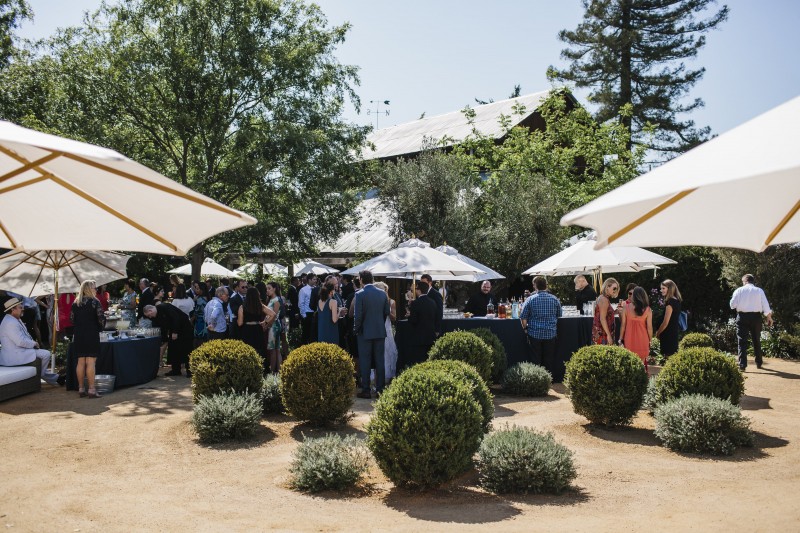
They didn’t want a gigantic event or a huge group of attendants — just 130 guests and their two siblings to stand beside them. Kim’s twin goddaughters scattered peach-hued rose petals at the ceremony, which was led by Josh’s father. The couple wrote their own heartfelt vows, and Kim wrapped her bouquet with a stunning antique necklace that had been carried by brides in her family for over a hundred years. Her French lace slip dress was light and airy, with buttons down the back and a high-low hem that added a bit of whimsy. “My mom spotted the dress, and as soon as I slipped it on, I knew it was the one,” she says.


Kim’s work in the design industry was a constant source of inspiration for the reception, with its rustic farm tables set in the dappled shade of oaks and redwoods. An organic flower farm just a few miles away supplied garden roses, sweet pea tendrils, mint, and herbs for the couple’s unstructured, straight-from-the-field arrangements. Guests gathered for cocktails in an olive grove before dining under the trees on a farm fresh, Wine Country menu of salad, grilled rib eye steaks, ginger sea bass, and sweet pea ravioli, all served family style from big shared platters. “We had three long rows of tables on the lawn, and I remember sitting next to Josh and looking out at all our family and friends eating, drinking, talking, laughing,” Kim says. “It was a special moment to see our loved ones all in the same place and having a good time.”


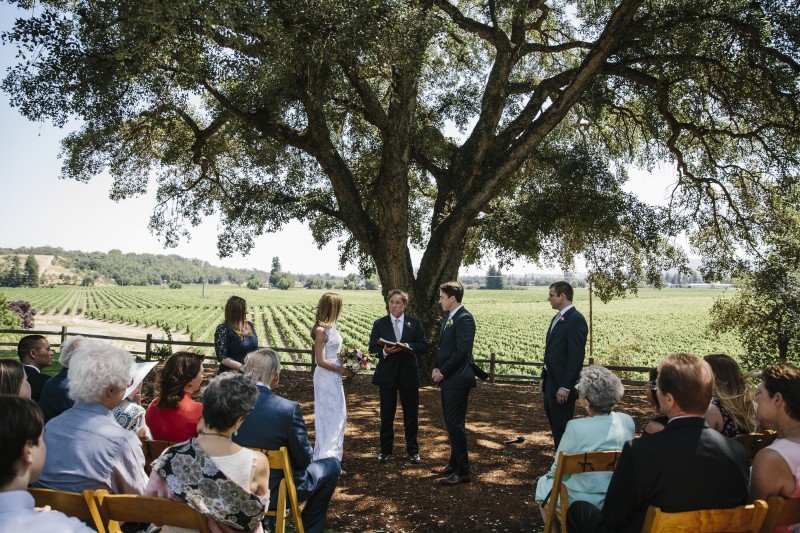

Later, as the sunset cast the surrounding hills in gold, guests headed to the barn for Josh and Kim’s first dance to Leon Bridges’ soulful “Coming Home.” Josh’s 96-year-old grandmother Virginia, who had flown in from Austin, Texas, beamed with joy as guests joined the couple in dancing up a storm. Healdsburg favorites The Noble Folk cooled everyone off with homemade salted caramel and olallieberry-lemon ice cream — “the best I’ve ever had,” says Kim. To wind down the warm summer evening, the couple and their friends decamped to Duke’s Spirited Cocktails on the square in Healdsburg, which had opened just days before. And though Josh and Kim now live in San Francisco, a quick trip north brings them back to that golden day anytime they wish.



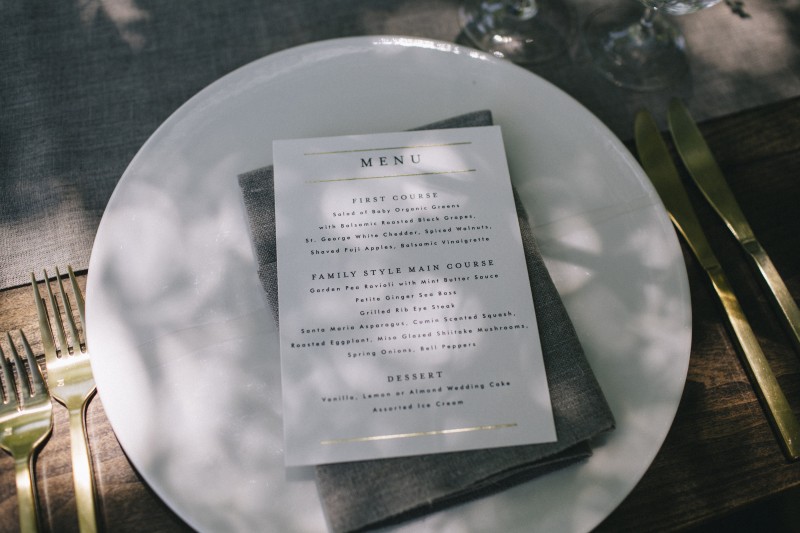
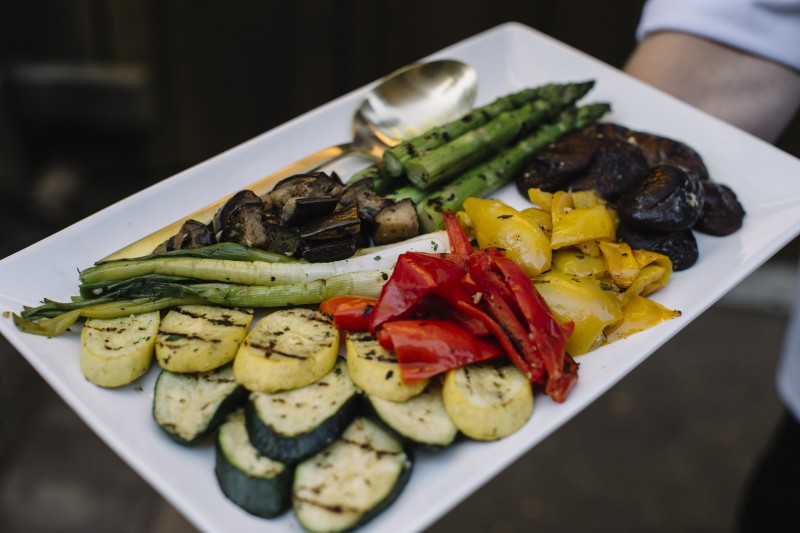

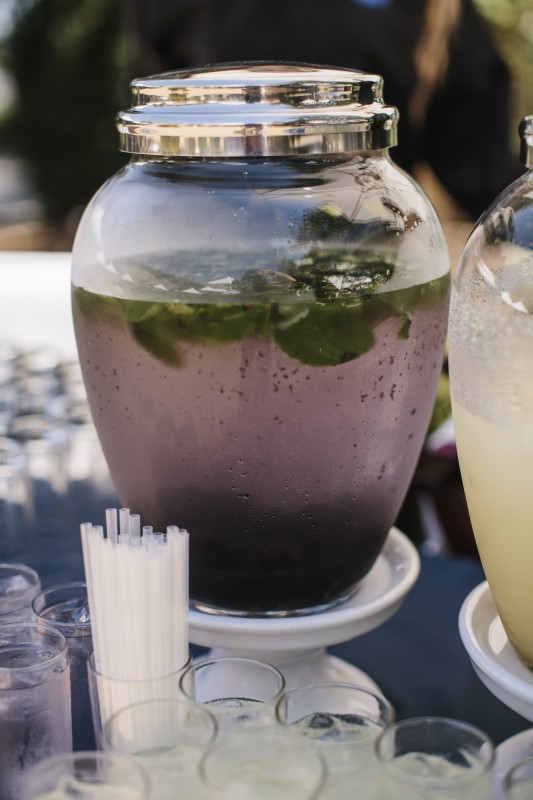
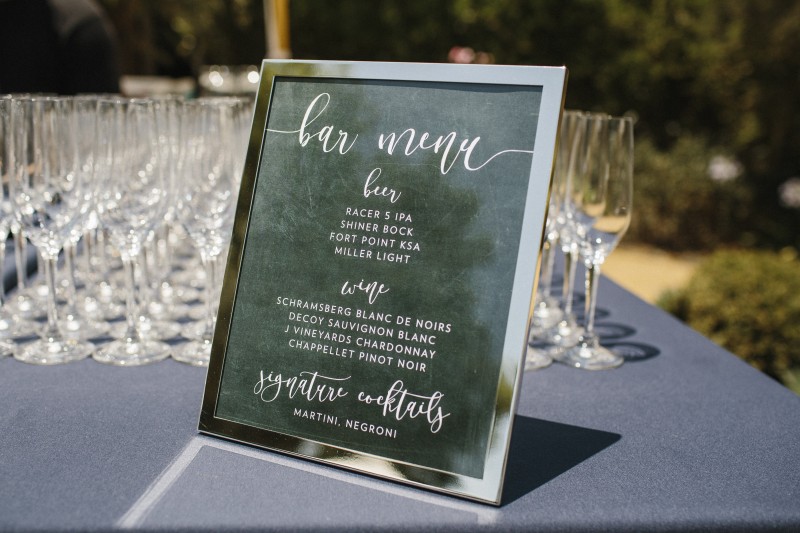
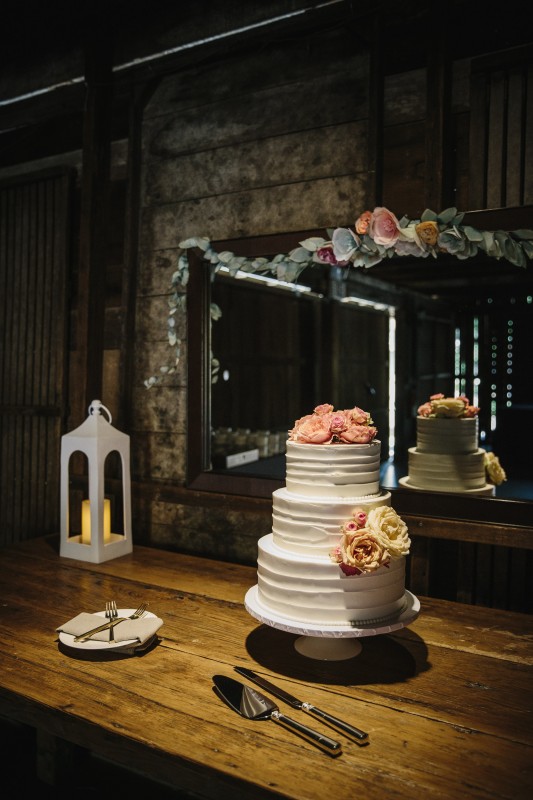

RESOURCES
Venue: Healdsburg Country Gardens
Photography: Lucille Lawrence Photography
Florals: Dragonfly Floral
Catering: Elaine Bell Catering
Cake: Moustache Baked Goods Bar
Ice Cream Bar: The Noble Folk
DJ: MikeyMason, Boutique DJs
Makeup: Eliza Desch
Gown: Ivy by Rue de Seine
Invitations: Page Stationery
Planner: Heald Wedding Consultants

Sonoma cheesemakers find the perfect canvas for playing with texture and ingredients.
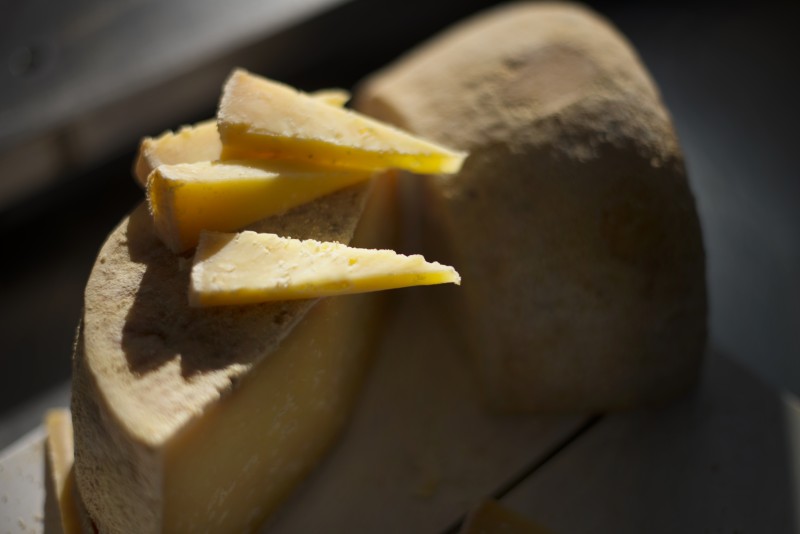
When Achadinha Cheese Company rolled out its Lonely Goat Garlic cheese curds three years ago, it was quite a break from tradition. The 290-acre Petaluma farm was best known for its classic goat’s milk chèvre, rather than these new-fangled curds in flavors like Herbie Curd (infused with fresh herbs) or Hot Hilda (with pepper flakes, cayenne pepper and sea salt).
“We wanted variety at the 70 or so farmers markets we supply,” says Achadinha co-owner Donna Pacheco, whose family had raised dairy cows since 1955, until they switched to frolicking goats in 1997. “We are doing quite a few different cheeses now, some in blends of goat’s and cow’s milk. Our biggest thing coming is kefir cheese in flavors like apple, cherry, lemon, berry, vanilla or anything in season.”
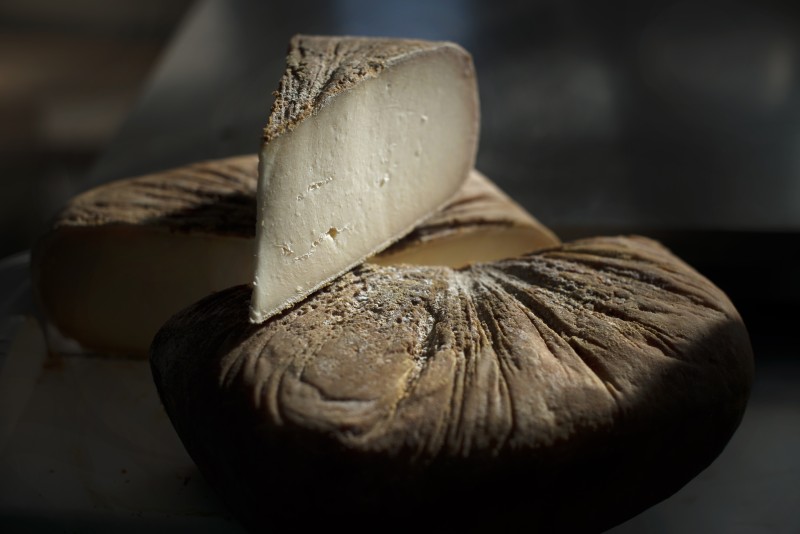
Unfamiliar goat cheese flavors are now a signature for Redwood Hill Farm, as well. In business since 1968, the Sebastopol farm is revered for its fresh chèvre, a rindless goat cheese that’s rich and bright with a distinctive tang, light citrus notes and just a bit of salt. But today, the company offers a chèvre spiked with pink, green and black peppercorns, a garlic-chive chèvre and a roasted chile chèvre, plus specialties like Smoked Goat Cheddar, and Cameo, a creamy, high-butterfat Camembert-style bloomy rind goat cheese sprinkled in fresh herbs.
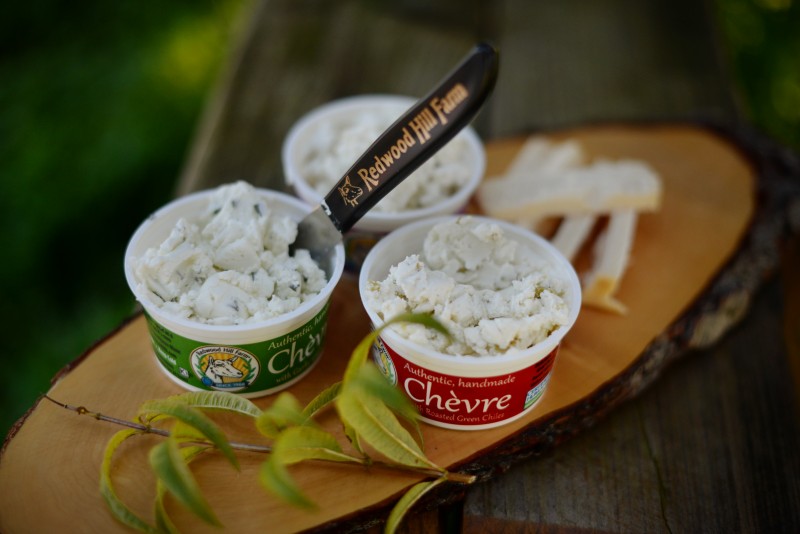
Sonoma County has long been known for its beautiful goat’s milk. And the rest of the nation has been embracing the boutique fromage’s charms ever since the now-famous Laura Chenel’s Sonoma chèvre was first rolled into a log and showcased on the Chez Panisse menu in 1981.
Yet the popularity of surprising textures and complex add-in ingredients is growing, driven by entrepreneurs such as newcomer Chevoo of Healdsburg. The company produces cubed chèvre marinated in extra virgin olive oil that’s seasoned with combinations like smoked rosemary, California dill pollen and garlic, and Aleppo-Urfa chile and lemon. The cheeses are infused with the crushed botanicals for up to eight weeks, delivering a powerful punch to the mild dairy product.
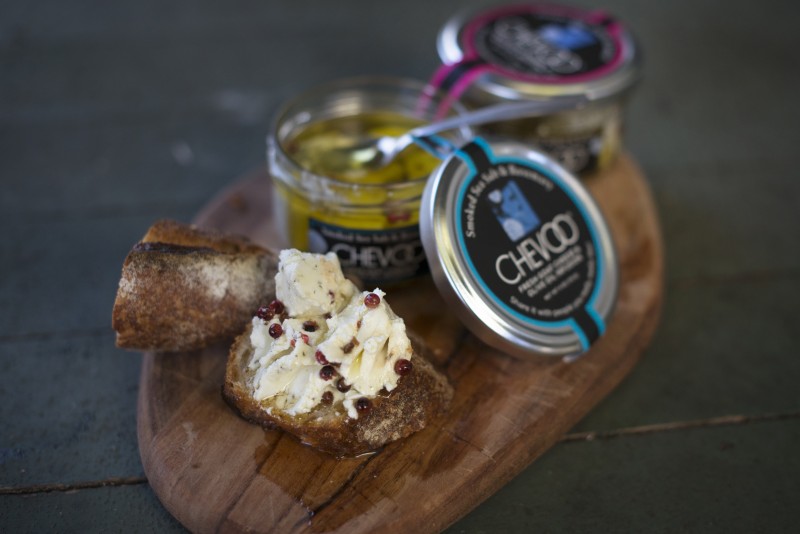
Early last year, Laura Chenel’s introduced a line of marinated Cabécoustyle goat cheese, including one with California extra-virgin olive oil and herbs and one with jalapeño olive oil, organic canola oil and crushed chiles. Last spring, it debuted a log of fresh goat cheese blended with garlic and sun-dried tomatoes and rolled in red and green pimento peppers.
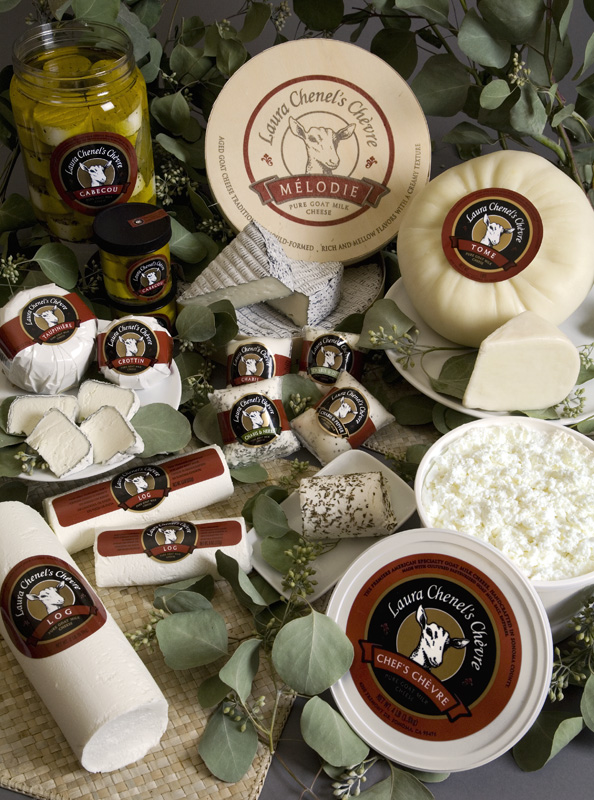
It’s clear that big, bold flavors are trending, and customers are eating them up. In 2015, Chevoo products were in 20 local stores. Now the company supplies some 400 outlets nationwide, including Whole Foods. Demand has been such that this past November, Chevoo cofounders Gerard and Susan Tuck opened a 10,000-square-foot production facility in an industrial area of Healdsburg, relocating from their original offices in downtown Sonoma. The Tucks are working on three new “closely kept secret” flavors for release later this year. Gerard Tuck offers a few hints: “Something bright and fresh for summer, something decadent for the festive season, and something sweet to kick off 2018.”
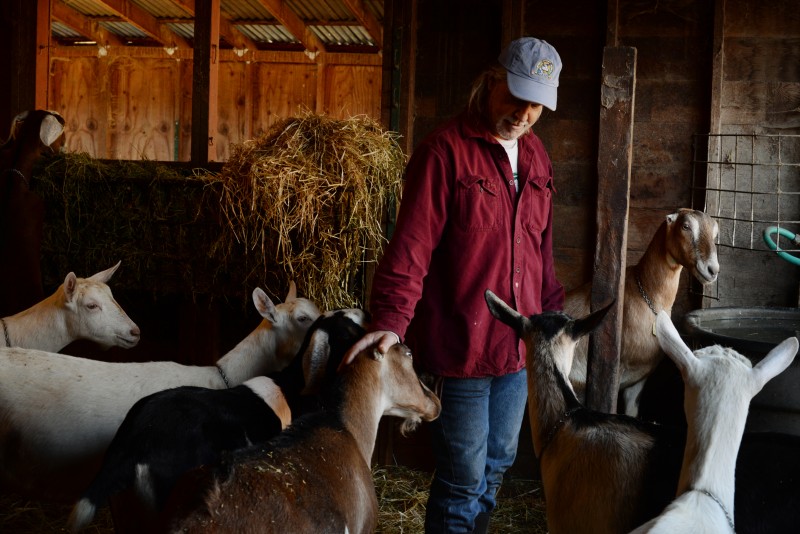
The current focus on artisanal cheese in interesting flavors doesn’t surprise Redwood Hill farm and marketing supervisor David Bice, whose family founded the creamery. “It’s following an influx of specialty, gourmet craft foods,” he says, “plus people’s general desire to support local quality.”
Goat’s milk is the perfect blank canvas for such culinary art, he adds, offering greater nuance than traditional cow’s milk. Working with some 300 goats on his family’s 20-acre property, his team fashions a Bucheret cheese that’s dense and buttery with earthy notes, a goat feta and several goat cheddars. Traditional feta is the best-seller.
“We’ve been making feta the longest, and it’s so versatile with food and drink. It’s less salty than most other fetas,” he says. “I call it — and the cheddars — our gateway cheese. People try it, discover they really like it, and then get brave to try our other goat cheeses.”
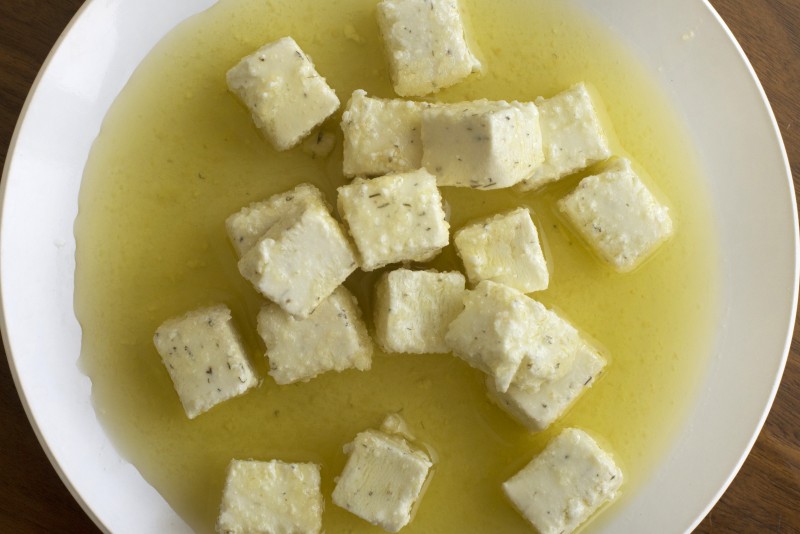
The current mission, says Tuck, is elevating simple goat cheese into a larger savory category with a wider variety of uses — inspired by the way he and his wife long enjoyed the cheese in their native Australia before relocating to Sonoma a few years ago.
“We find that foodies entertain with Chevoo slathered on crusty bread or a rustic cracker, and also cook with Chevoo,” Tuck says. “There’s the convenience of adding it to your favorite meals, like toast and avocado, salads, grilled vegetables, steak — it can be a kitchen staple. Stirring the chile-lemon Chevoo through hot pasta adds a delicate heat, for example, and a bright citrus flavor.”
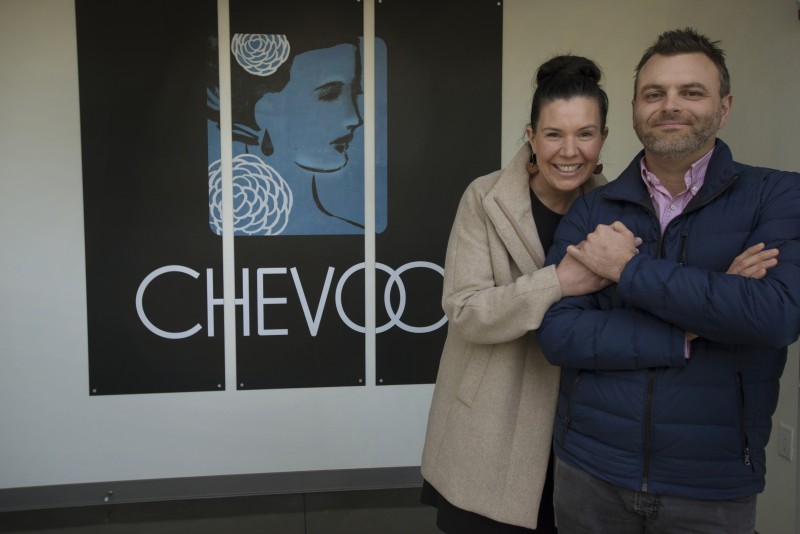
Flavored cheeses deliver so much impact, they actually can be used in place of sauces and dressings, particularly when marinated. Sonoma County chef and Bauman College culinary program director Jacquelyn Buchanan recently created a recipe for Laura Chenel’s, for example, tossing heirloom tomatoes with Cabécou, torpedo onions, basil, sea salt, ground pepper, balsamic vinegar and drizzles of the cheese’s own herbed oil.
The specialty goat cheese market is poised to grow even more, Tuck says. Indeed, nationwide, between 2015 and 2016, milk goat inventory grew to 375,000 head, up three percent, according to the United States Department of Agriculture (USDA). In 2015, milk goats numbered 39,000 in California, the USDA reported, with the state ranking just behind Wisconsin for goat’s milk sales.
“Consumers are moving decisively away from industrial foods toward healthier and tastier artisan foods made locally,” Tuck says, noting that Chevoo plans to reach 1,500 to 2,000 stores this year.
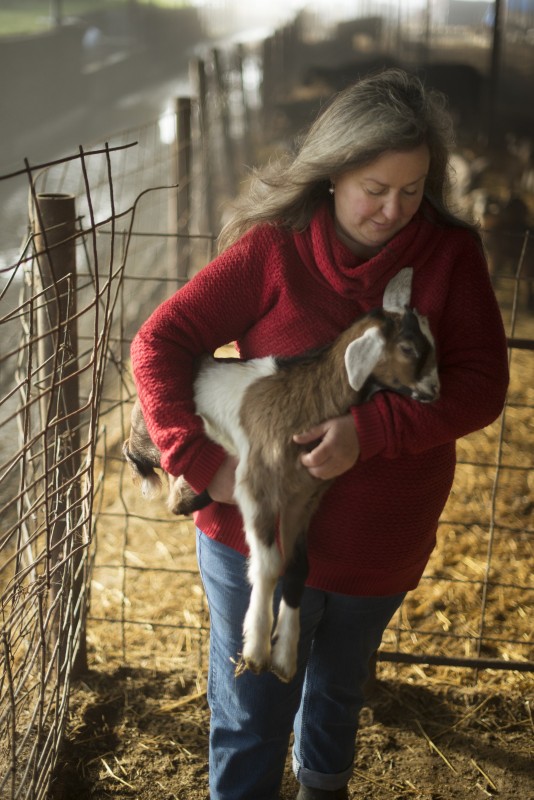
Part of the burgeoning appeal, Pacheco believes, is an increased consumer focus on diet, and the cheese’s increasingly more sophisticated crafting.
“People know goat’s milk is easier to digest,” she says. That’s because goat’s milk is naturally homogenized, meaning the fat globules are already broken down, unlike cow’s milk — and goat’s milk proteins also are dierent, so someone who is allergic to cow’s milk can often drink goat’s milk.
“On top of that is the fact that today’s cheese doesn’t taste goat-y, like the goat’s milk cheese I had in the ’70s,” she adds.
At Achadinha, Pacheco makes Capricious, an aged goat cheese handrubbed with olive oil and aged for over a year, a feta and her best-selling Broncha.
“The Broncha was inspired by [my husband] Jim’s parents both being from Portugal, and making their own cheeses with a great deal of care and passion,” she says. The mild, mold-ripened cheese picks up delicate flavors from local breweries’ spent grains fed to the goats, and is aged for up to four months, bringing distinctive bleu notes.
Beyond those captivating milk flavors, there’s another factor that explains goats’ broad appeal, the cheesemakers say: They’re so darn cute. The Pachecos host popular springtime farm tours and cheesemaking classes, aording opportunities to get close to the 250 frisky, funny creatures who call the pastures home. “We have a mixture of goat breeds, but my favorite girls are Nubians, because they let you know they need love,” Pacheco says.
The Bice family, meanwhile, happily captures their 300 or so certified humanely raised goats on film for the world to enjoy. Zimba, a particularly charming Alpine, was the face of Redwood Hill until she died of old age in late 2015, posing for postcards, magazine ads, a semitrailer truck mural, and on a cheese shop poster in the 2010 Jennifer Lopez film “The Back-up Plan.”
The appeal is universal, it seems. The latest USDA study of the U.S. goat industry, in 2009, found that besides profit, 44 percent of all dairy goat operations rated “fun” as a very important reason for raising goats.
And that’s certainly tasty news.